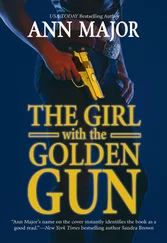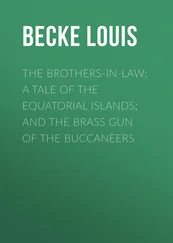The place to start is with guns themselves, and the time is now. There will be no better time. There will be far worse times.
Unfortunately, as the history of federal gun legislation so clearly demonstrates, a dramatic worsening may be necessary. The tommy-gun massacres brought the first federal controls; the riots and assassinations of the sixties brought the second. What will bring the third, in a country so stunned by violence that we now expect and accept armed rampages as if they were natural phenomena like hurricanes and tornadoes? “Maybe that’s the answer,” said David Troy, the special agent responsible for ATF law-enforcement in Virginia. “Right now you have people who are involved in violent crime and firearms violence who were never touched by it before. Maybe there is a watershed coming in the United States. We haven’t gotten there yet.”
More firearms atrocities will occur. In America today, this is a given. The greater atrocity, however, is to stand back and allow the gunslingers of America free play while the rest of us cower under the new tyranny of the gun.
AT THE TIME OF NICHOLAS ELLIOT’S rampage, business was brisk for James Dick and Guns Unlimited. This was before the Gulf War exodus of his customer base and the general slackening of firearms sales that later forced Dick to file for bankruptcy. Business was so brisk that within a year of the shootings Dick decided to expand the Guns Unlimited empire and open his third store.
One must be cool indeed to be a gun dealer. The site Dick chose was a small shopping plaza on Kempsville Road in Virginia Beach.
The Atlantic Shores Christian School was across the street.
AFTERWORD TO THE VINTAGE EDITION
IN SEPTEMBER 1993, when I completed the original manuscript for this book, I was certain significant reform of America’s firearms regulations was a long way off and that a package like my Life and Liberty Preservation Act had little chance—to be more precise, “no chance in hell”—of being enacted. But much has changed, and I have since come to believe that progress toward rational regulation may in fact be inexorable now that America seems at last to have awakened to the obvious and mounting social costs of allowing the unimpeded flow of arms to kids, crack addicts, felons, and fugitives.
In August 1994 President Bill Clinton helped his Congressional allies muscle through a new crime bill containing a long-overdue ban on nineteen specific models of assault weapons and related guns. Among the specific models banned were the Intratec pistol used by Gian Luigi Ferri in his attack on a law firm in San Francisco; the semi-automatic AK fired by Patrick Purdy in Stockton; and the Cobray M-11/9 adopted by Nicholas Elliot for his attack on the Atlantic Shores Christian School.
A more significant but little-known portion of the crime bill substantially tightened regulations governing firearms dealers, requiring that license applicants be photographed and fingerprinted and that the dealers comply with all state and local laws governing firearms dealerships, including zoning regulations. The law also dictated that ATF must provide to local law-enforcement agencies lists of firearms dealers in their territories. These requirements alone will begin to reduce the ranks of that vast army of “kitchen table” dealers who supply so many guns to America’s crooks.
In May 1994, President Clinton used his executive powers to halt the import of Chinese SKS rifles, ancestors of the AK-47 and once the standard infantry rifles of the Chinese, North Vietnamese, and Soviet armies. Chinese exporters, some with direct connections to the Chinese military, pumped the rifle into this country at such high volume that throughout much of 1993 a shopper could buy one for well under $100. As a consequence of its low price and its ready availability under regulations governing the sales of long rifles, the SKS became the only rifle to make ATF’s 1993 and first-quarter 1994 lists of the top ten weapons most commonly traced by America’s law-enforcement agencies. It was an SKS that Wayne Lo used in his massacre at Simon’s Rock College in Massachusetts.
The most important legislative advance toward public safety, however, was the activation of the Brady law early in 1994. News reporters, forced by space constraints to describe the bill in journalistic shorthand, managed to create the widespread impression that it merely established a five-day waiting period. In fact, the bill took a revolutionary step down the road to rationality.
Prior to the Brady law, a fundamental paradox governed firearms regulation. Everyone in America, even the most zealous NRA fundamentalist, has long agreed that certain people—felons, fugitives, and so forth—should not be allowed to buy guns. Yet Congress, until it passed the Brady law in 1993, never took the necessary next step of establishing a practical means of eliminating those very people from the marketplace. Society’s only brake on the wholesale distribution of firearms to killers and robbers was the rather flimsy form 4473, which, as I showed on this page, asked illegitimate buyers to disqualify themselves at the point of purchase and stayed in dealers’ files unvetted by anyone.
Brady’s major accomplishment was to establish for the first time in American history a uniform minimum background check on all handgun purchasers and thus take the responsibility for screening buyers from the hands of America’s gun dealers. Brady exempted states such as Maryland, California, and Florida, which already had some form of background-check system. But elsewhere, where sales of handguns hitherto had been virtually unregulated, prospective buyers now had to wait five days while local law-enforcement officials conducted a background check.
Such checks constitute a powerful limit on distribution of firearms to the wrong people. In 1991, Florida began an instant background-check program. The process takes an average of three and a half minutes, but in 1993 alone the program unconditionally barred 7,534 purchases of firearms by known crooks. It blocked another 13,274 purchases attempted by persons who had been arrested for “dangerous crimes” but whose cases had not yet been fully adjudicated. The program also intercepted 854 purchases attempted by buyers wanted under felony and misdemeanor warrants.
The fact that so many felons, fugitives, and other dangerous souls still try to buy guns from licensed dealers, despite such checking networks, indicates the extent to which they had become accustomed to the easy access afforded in the past by form 4473. Old habits, apparently, die hard.
A couple of vast gaps still remain in America’s system of firearms regulation. People spurned by legitimate dealers can turn to other avenues of firearms access that remain wide open, the most notorious being the private marketplace, where gun owners remain free under federal law and most state laws to sell handguns and rifles from their personal collections to any adult they please without so much as asking to see a driver’s license. Even the new Brady law does not apply in such sales. Like most federal gun-sale laws, Brady regulates only transactions conducted through federally licensed dealers. “It’s not even a loophole,” one Colorado law-enforcement official told me. “It’s a chasm.”
One Saturday in the summer of 1994 I paid a visit to Happy’s Flea Market in Roanoke, Virginia. Sellers of collectibles rent space inside the defunct Happy’s Recreation Center on a more or less permanent basis, but on weekends anyone with something to sell can pay a fee and set up shop in the field out back. At the end of the last row I found a jovial man selling rifles and several high-quality pistols, including a Smith & Wesson 9 millimeter and a Colt .45. At another table, this one erected in front of a large RV, I found a woman sitting before a table strewn with what at first appeared to be the usual flea-market fare. As I got closer, however, I saw that her merchandise included a few high-quality handguns and one cheap derringer. Two men at two other tables sold rifles. In still another row, a sullen man stood before a flame-red Ford Fairlane, idly flipping the cylinder of a small-caliber pistol. Both the pistol and the Fairlane were for sale.
Читать дальше
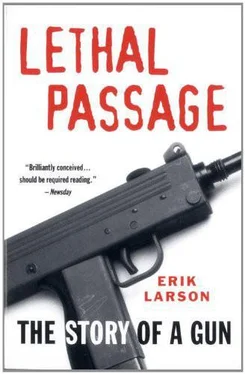
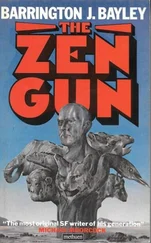
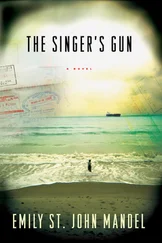

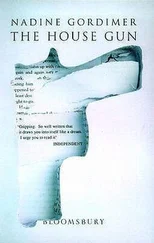

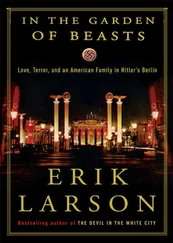

![Ричард Деминг - Whistle Past the Graveyard [= Give the Girl a Gun]](/books/412176/richard-deming-whistle-past-the-graveyard-give-t-thumb.webp)
